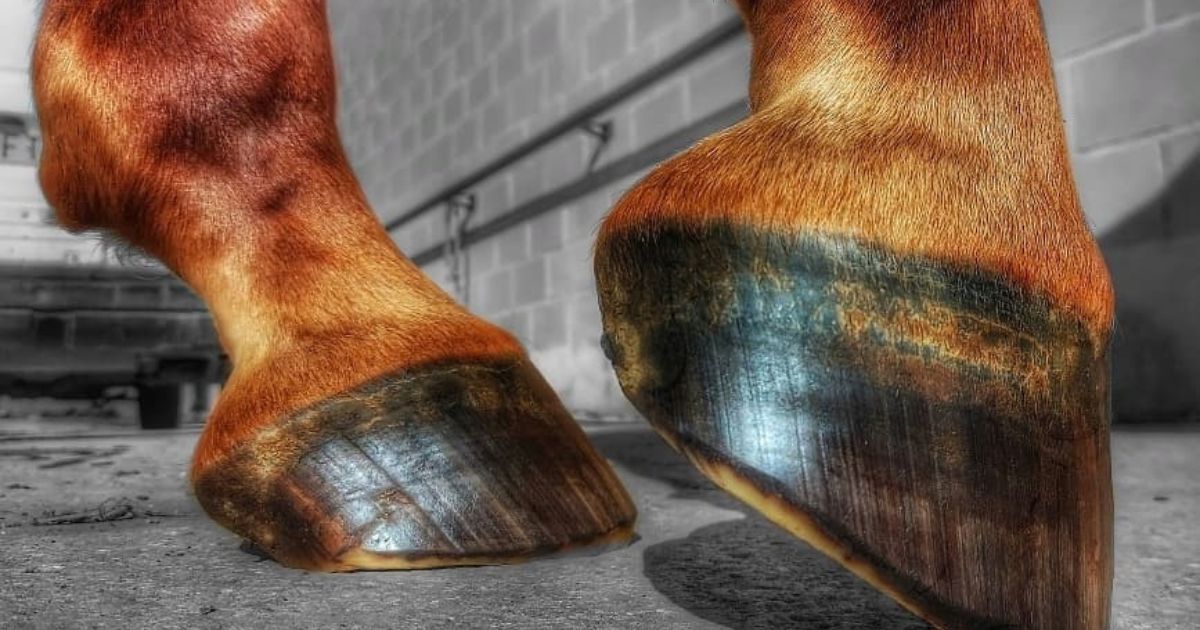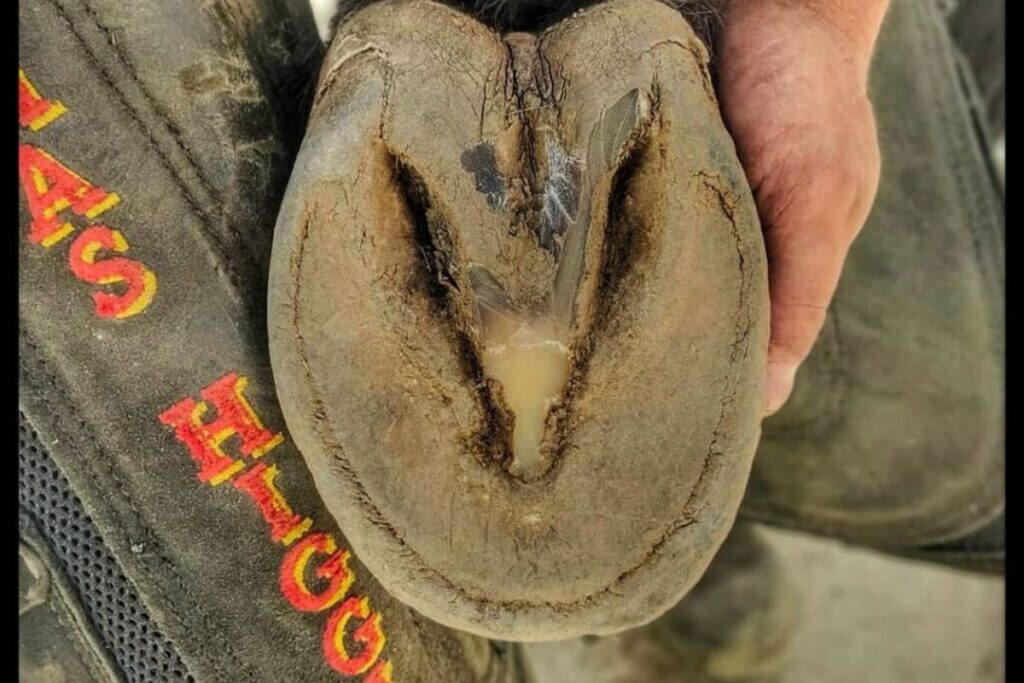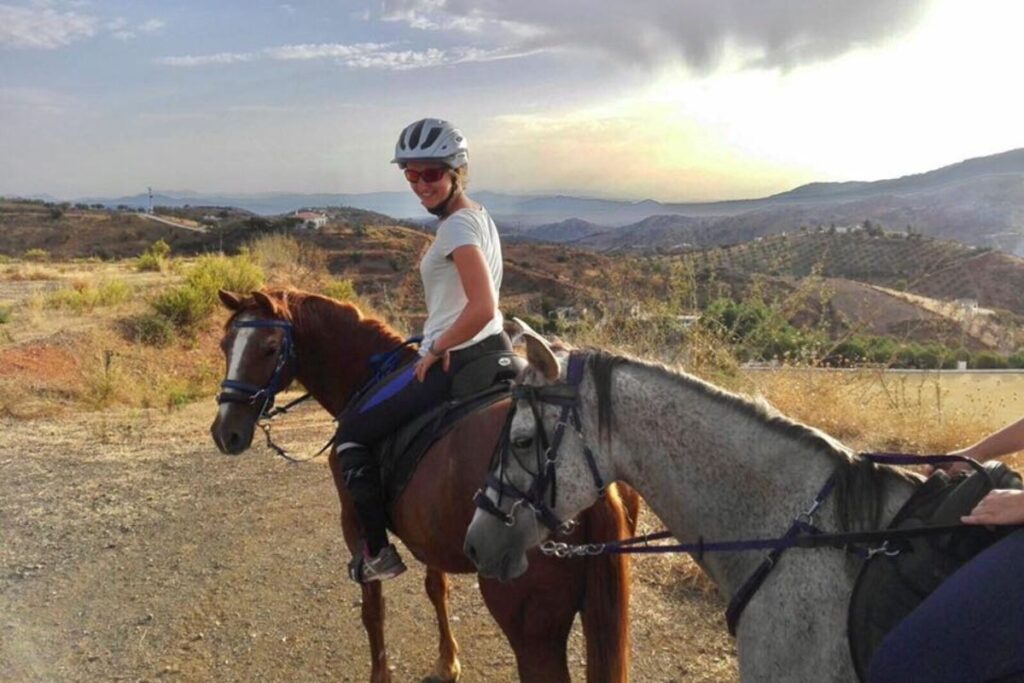Menu

there is much debate about the pros and cons around barefoot horses. It is a subject that can elicit passionate emotions. Here, we take a look at some of the information about going barefoot with your horses. From there, you can decide if it is something you are interested in researching further. Our intention is not to make a case for one choice over another, merely to present a few of the facts. Let us take look.
Shoeing horses is thought to have started around the same time as horses were first domesticated. There have been forms of horseshoe found in archaeological sites from as far back as 400 BC. These were made from plants, leather straps, and rawhide. In Northern Europe, where the weather was wetter and colder, it is believed that metal horseshoes started to be used in the sixth or seventh centuries.
You may also like to read: Spot the horse’s sunburn and give first aid to the scalded muzzle
Some people keep their horses barefoot simply because they do not ride them often enough to need shoes. Some people have kept their horses shod for no more complicated a reason than they were not aware of there being any other options.
This number is reducing now as more people are finding out about the variety of choice through magazines, other horse owners, and social media. More research is being carried out in this area as it rises in popularity too.
However, in recent years, there has been a movement towards a holistic view of horses. The idea of keeping them domestically but retaining a closeness to their wild roots appeals to many people. It can go hand-in-hand with those who are also interested in track systems, bitless, and treeless options for their horses as well.
When a horse takes a step, the vascular system in their leg and foot is activated. The step causes the hoof to flex upon hitting the ground. With this, blood rushes into the hoof capsule. As the hoof moves away from the ground, the blood goes back up the leg. It is the flex that is the key to the manoeuvre.
Metal horseshoes limit the ability of the hoof to flex. This could impact upon the health of the hoof, leg, and even the rest of the horse. As no body part exists without the others.
Many barefoot lovers advocate this method as a way of improving hoof health. There are thermal dynamic images available where you can see a leg with a metal shoe compared to a barefoot leg on the same horse. The one with the shoe is blue, representing a colder environment. This suggests that blood flow is being restricted when compared to the reds and yellows, i.e. the warmth in the barefoot legs.
However, there are some caveats to bear in mind. Read on to find out more.
Another benefit of not having horseshoes fitted is the lack of nails in the hoof. Although having the nails in the horses’ hooves hurts no more than when we cut our own nails, there are still some risks associated. Abscesses can be more likely to form. This is also true of white line disease and bruising in general.
There is little evidence of lameness in wild horses. Some say this suggests that shoeing causes foot sore horses.
"It is important to note, that barefoot may not suit every domestic horse in every setting"
In some areas, it can be cheaper to have your horse unshod. Dependant on the circumstances, some horses can go between 4 – 8 weeks in between trims. Shoeing tends to be needed more frequently, around every 6 weeks.
A barefoot farrier can be cheaper than a traditionally trained farrier. Some charge as little as €25 per hour. In the UK, a traditional farrier can cost up to £100 an hour. However, as the popularity of barefoot trimming has increased so have the farriers’ prices in some areas.
There are risks with hiring barefoot farriers, as with any professional. Be sure to check them out thoroughly. There are those who are learning to trim barefoot through online courses. This is a potentially risky way to learn a practical job.
With a traditional farrier, you can be assured of their lengthy training through practical apprenticeships. There are many traditional farriers who also specialise in barefoot trimming. It may be prudent to locate this style of farrier if you’re looking to transition your own horse/s from shod to barefoot.

There are some farriers who are trained traditionally to fit steel shoes that will recommend a horse to go unshod wherever possible. Thomas Higgins, based in the south of Spain, is one such farrier. He explained that their training and experience gives them the expertise to ensure that your horse is an appropriate candidate for barefoot life.
A thoroughbred, for example, is a breed that has been manufactured through human intervention. This has led to thinner soles on these horses’ hooves.
"The natural depth of a horse’s hoof sole can be around 8mm thick"
In a thoroughbred, the natural depth of the hoof is often more likely 3mm thick. The natural hoof growth rate can be around 10mm a month. A thoroughbred will grow as little as 3-4mm a month.
This does not make these types of horses good candidates for barefoot. Their weaker soles are more likely to lead to the white line getting opened by a rock, for example. Check with a professional to get tailored advice for your horses.
You may also like to read: Veterinarian: Why treating the symptoms is not enough
It is possible to compete in unshod horses. Show jumpers, eventers, hunters, endurance racing, and trail horses are all capable of working barefoot.
It is rarely a case of taking off metal shoes and going straight to the races. It is more likely to be a case of transitioning and monitoring over a course of several, perhaps many, months.

Miek van Merrienboer is an endurance racer based in The Netherlands. She explained that she sometimes rides her barefoot horses in plastic composite horseshoes during competition season. In her opinion, these offer better grip and shock absorption than the traditional metal shoes. They are also easier to modify to create a better roll-off for the toe.
If there is little recovery time available between long rides, she opts for hoof boots. The Spanish brand of floating boots can be adapted for each hoof through heat application. Miek said she finds them to be the ones that cope best with extreme conditions, like mud or climbing rocky ground.
Good hoof health starts with good general hoof care. Regularly pick out and check for thrush. This can look like a black, oily, waxy liquid. It can be around the frog but also all around the sole. Also, look out for little stones in the white line. These can make holes and separate the hoof wall from the sole.
Some barefoot farriers will recommend removing the bars out of the hoof. These are either side of the frog. However, it can also be argued that a horse would not waste energy growing something they did not need.
The unshod hoof is able to wear itself down with use. Their breakover is then more in line with the hoof to adjust for that.
Bad confirmation means the hooves can, of course, wear themselves out of balance so that is worth keeping an eye out for.
In dry, warm climates, barefoot hooves can maintain a hardness that you may have to work harder to recreate in wetter countries. This is not always the case, however. It is all very dependent on the horses themselves. Constant monitoring and communication with an expert farrier is crucial, especially in the early days of transitioning.
Creating strong barefoot hooves requires a healthy barefoot environment. Putting ad-lib food and water as far away from one another as possible was one suggestion we received from a barefoot horse herd owner. Encouraging the horses to walk as much as possible recreates the 12-15 miles of wandering they would do in the wild. It also stimulates hoof growth.
"Creating strong barefoot hooves requires a healthy barefoot environment"
If the ground is prone to becoming soft and muddy in rainy conditions, you can create harder sections. Using gravel to do this provides a surface that can harden the horses’ hooves. Building up slowly to regular riding on hard surfaces is helpful too.
Traditional metal horseshoes have been around for centuries. But as research continues to develop, it is inevitable that we will also research other ways to protect our horses’ hooves. Doing your own research is important. Talking to professional farriers is the best way to learn. Getting the experts to assess your horses’ hooves is the best place to start in practical terms. It all depends on many factors, like the horse itself, the environment, nutrition, and personal choice.
Thank you to @thomashigginsfarrier for his kind permission to use his Instagram photos.